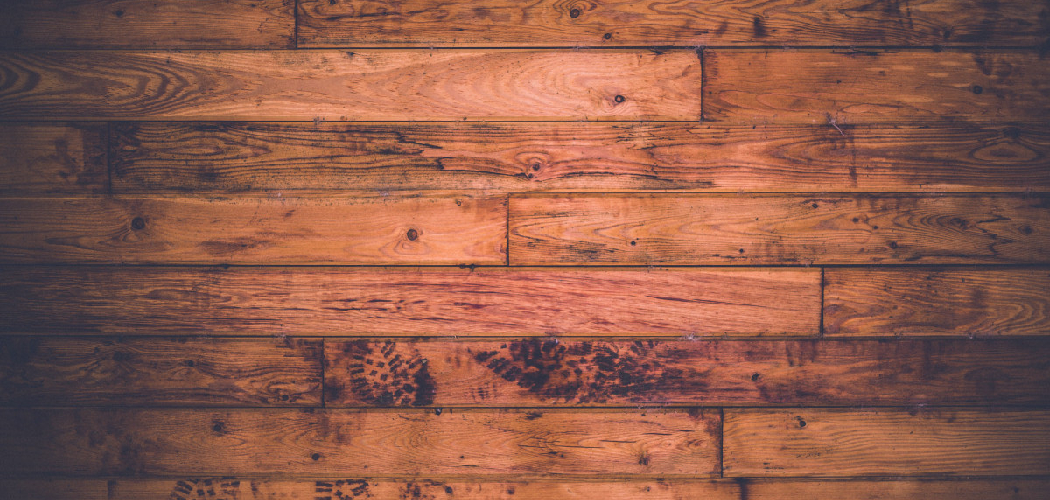Pine wood is an excellent wood for many projects, from furniture to trim work, and it’s affordable compared to other hardwoods. However, getting a consistent stain on pine wood can be quite challenging, resulting in blotchy and uneven color.
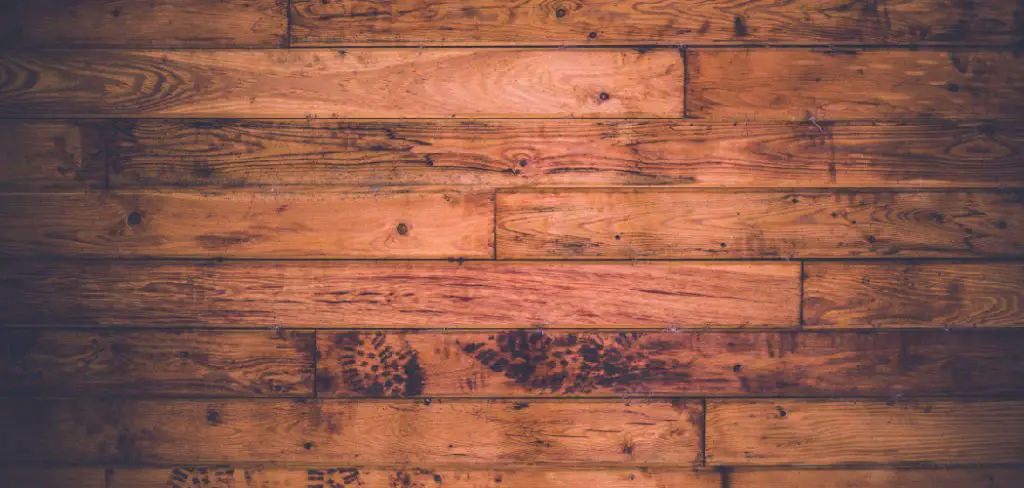
It can be frustrating to see patches of darker or uneven color on your piece of wood. But fear not! There are several solutions to fix blotchy stains on pine wood, and we are here to help you out.
This blog post will discuss easy and effective ways to fix blotchy stains on pine wood for a professional-looking finish. So keep reading to learn more about how to fix blotchy stain on pine wood.
Can You Fix Blotchy Stain on Pine Wood?
Have you ever stained a piece of pine wood only to find blotchy or uneven color once it dries? Don’t worry, you’re not alone! This common problem occurs when the wood’s natural grain, which is more porous and therefore absorbs more stain, mixes with areas that are less porous, resulting in a blotchy appearance.
Luckily, a few simple methods exist to fix this issue, such as using a wood conditioner or sanding the wood down to create a more uniform surface. With a little extra effort, you can have a perfectly stained pine wood piece that will make any DIY project stand out.
Why Should You Fix Blotchy Stain on Pine Wood?
Pine wood is a popular material that is used in various construction and furnishing projects. However, it is also known to be vulnerable to blotchy stains that can ruin the appearance of your furniture or home project. This can be due to a variety of factors, such as uneven absorption of stain or the use of inappropriate sanding techniques.
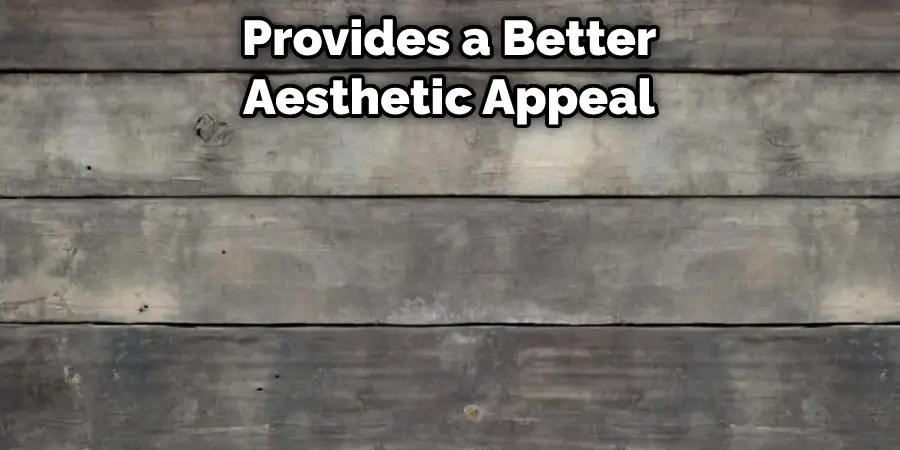
Fixing blotchy stains provides a better aesthetic appeal to your project and ensures that you have a more durable surface that can withstand daily wear and tear. Ignoring the blotchy stains may worsen the problem and can be more difficult to correct in the future.
A smooth and consistent surface is not only visually appealing, but it can also add value to your property. So why settle for a less-than-perfect outcome when fixing blotchy stains can make all the difference?
7 Steps to Follow on How to Fix Blotchy Stain on Pine Wood
Step 1. Pre-Stain Conditioner
One solution to getting a consistent stain is to use a pre-stain conditioner. You can apply this product before the stain to ensure it gets absorbed evenly. A pre-stain conditioner helps to reduce blotches, providing an even tone to the pine wood.
Ensure that you apply the conditioner with a brush and let it sit for the recommended time before adding the stain. Follow the manufacturer’s instructions on the conditioner’s bottle for the correct drying time; this should usually not exceed thirty minutes.
Step 2. Sanding
Sanding the pine wood before the application of the stain can also help eliminate blotches. Start by sanding the wood in the direction of the wood grain with 100-grit sandpaper.
This removes any pronounced spots or unevenness on the wood’s surface, providing a uniform canvas for the stain. Clean the wood of any dust or debris with a tack cloth before applying the stain.
Step 3. Gel Stain
Gel stains are another great solution to uneven and blotchy stains on pine wood. Unlike liquid stains, gel stains have a thicker consistency that reduces the chances of blotching.
They provide a more even distribution of color, and they do not penetrate deeply into the wood, resulting in less blotching. However, gel stains can take longer to dry, so be patient with the drying process.
Step 4. Spray Stain
Spray stains can be an excellent solution to even out blotchy pine wood. They provide a light and even coating on the wood, reducing the chances of blotching. However, spraying stains requires a specialized cutting tool. You will also have to mask off the surrounding area to prevent overspray from the stain.
Step 5. Repeat the Staining Process
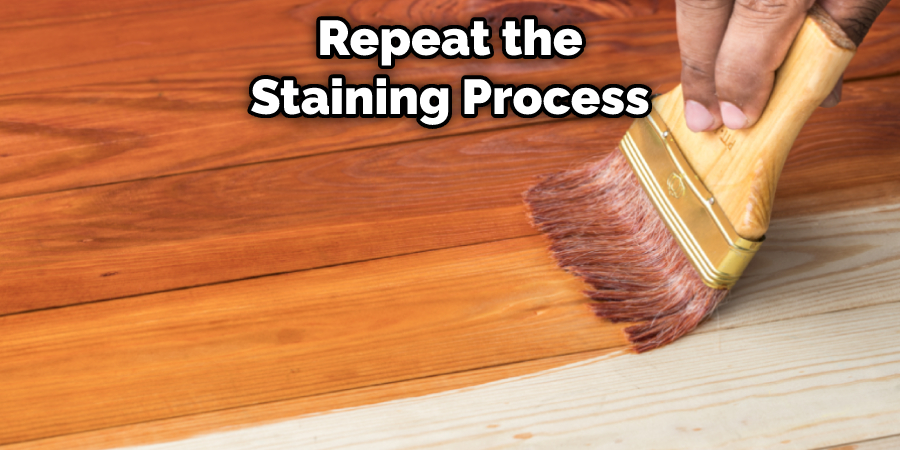
Next, if the previous solutions don’t work, you can repeat the staining process until you get the desired consistency. This may require a bit more effort, but it’s an effective way to ensure that the blotches are eliminated.
Start by sanding the blotchy areas to even out the surface, then apply the stain evenly on top. Follow the manufacturer’s instructions on the stain’s recommended drying time before applying a second coat. This ensures that the color is consistent throughout.
Step 6. Use a Stain Enhancer
If the blotchy areas remain, you can use a stain enhancer to help even the color. This is an additional product that you can apply after the stain has been applied and dried. It helps to enhance the appearance of the wood, making it look more uniform and without any noticeable blotches.
Step 7. Finish with Polyurethane
Finally, apply a polyurethane finish once you’re satisfied with the stain. This provides an additional layer of protection to your pine wood and helps to seal in color.
Make sure that you use a brush specifically designed for applying polyurethane coats and follow the manufacturer’s instructions on the drying time. Once this is done, your pine wood should look uniform and without any blotchy areas.
That’s it! You’ve now learned the steps on how to fix blotchy stain on pine wood. Remember, pre-stain conditioner, sanding, gel stains, spray stains, repeating the staining process, using a stain enhancer, and finishing with polyurethane can help give you consistent results.
5 Considerations Things When You Need to Fixing Blotchy Stain on Pine Wood
1. The Age of the Stain
One of the most important things to consider when you are trying to fix a blotchy stain on pine wood is the age of the stain. If the stain is new, it will be much easier to fix than if it is old. New stains can often be removed with a simple cleaning solution, while old stains may require sanding or other more intensive methods.
2. The Type of Stain
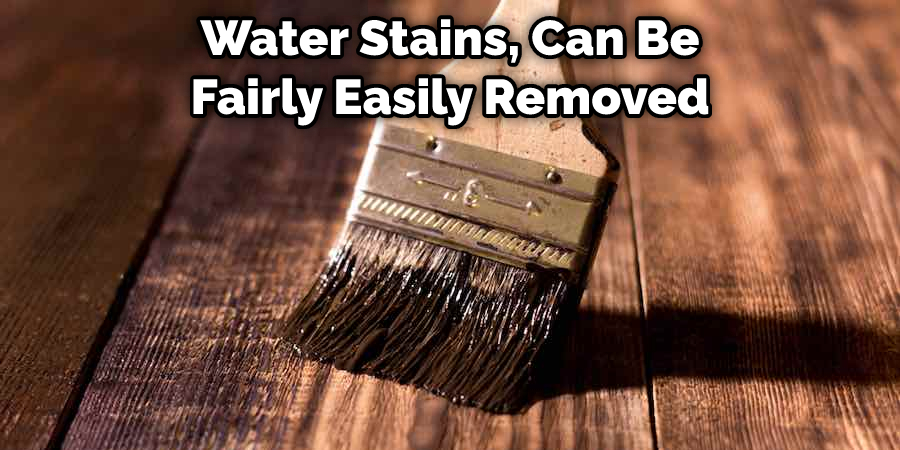
The type of stain you are dealing with will also affect how easy it is to fix. Some stains, such as water stains, can be fairly easily removed with the right cleaners. Other types of stains, such as oil-based stains, can be more difficult to remove and may require sanding or other more intensive methods.
3. The Color of the Stain
The color of the stain will also play a role in how easy it is to fix. Light-colored stains are generally easier to remove than dark-colored stains. This is because light-colored stains are less likely to penetrate deeply into the wood, making them easier to remove with cleaners or sanding. On the other hand, dark-colored stains tend to penetrate deeper into the wood and can be more difficult to remove.
4. The Size of the Stain
The size of the stain will also affect how easy it is to fix. Smaller stains are generally easier to clean than larger stains. This is because smaller stains can be treated with cleaners or sanded without having to worry about damaging the surrounding area. However, larger stains may require more intensive methods, such as stripping or refinishing, to remove them completely.
5. The Location of the Stain
Finally, the location of the stain will also play a role in how easy it is to fix it. Stains located on the surface of the wood are generally easier to clean than those located deep within the grain. Surface stains can often be removed with cleaners or sanding, while deeper stains may require more intensive methods such as stripping or refinishing.
Benefits of Fixing Blotchy Stain on Pine Wood
Pine wood is a popular choice for furniture and home decor due to its affordability and durability. However, sometimes the stain on pine wood can become blotchy and uneven, ruining the piece’s overall look.
Luckily, fixing blotchy stains on pine wood is possible, but it comes with many benefits. The wood will have a more uniform and professional appearance by fixing the stain, making it more visually appealing.

Additionally, a smooth and even stain can improve the value of the piece, making it more desirable for potential buyers. In short, fixing blotchy stains on pine wood is a simple and effective way to enhance the beauty and value of your furniture and home decor.
4 Common Mistakes People Make When Trying to Fix Blotchy Stain on Pine Wood
1. Sanding Too Much
One of the most common mistakes people make when trying to fix a blotchy stain on pine wood is sanding too much. When you sand pine wood, you need to be very careful not to sand too deeply, or you will damage the wood. If you do damage the wood, it will be very difficult to repair.
2. Using the Wrong Type of Stain
Another common mistake people make when trying to fix a blotchy stain on pine wood is using the wrong type of stain. There are two types of stains that can be used on pine wood: oil- and water-based. Oil-based stains are more difficult to work with and can often cause more problems than they solve. Water-based stains are much easier to use and will not damage the wood.
3. Not Using a Pre-Stain Conditioner
Pre-stain conditioners help to even out the absorbency of the wood so that the stain will be applied evenly. Without a pre-stain conditioner, it is very likely that the stain will be applied unevenly and will result in a blotchy finish.
4. Not Following the Manufacturer’s Instructions
The final common mistake people make when trying to fix a blotchy stain on pine wood is not following the manufacturer’s instructions. It is important to read the instructions carefully before starting any project, especially when working with stains and finishes. Each type of stain and finish has its own set of instructions that must be followed in order for it to work properly.
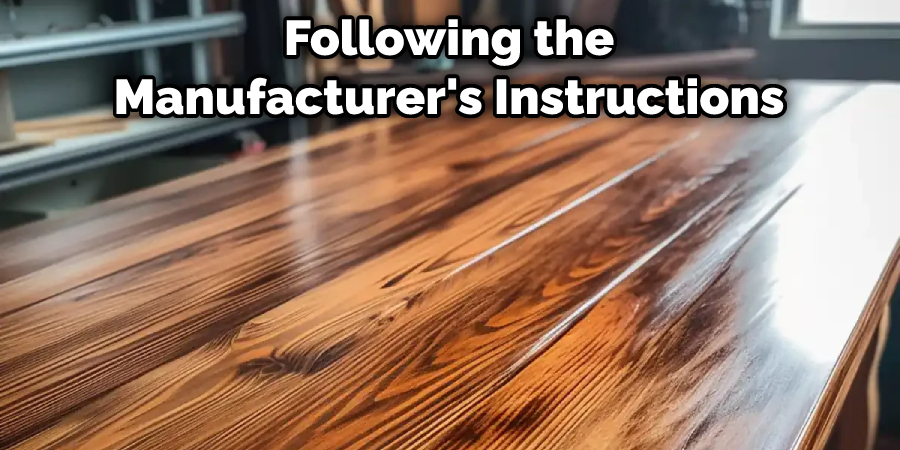
Conclusion
Fixing blotchy stains on pine wood doesn’t have to be frustrating. As demonstrated above, various solutions can help you achieve even and consistent color on your piece of wood. Always pre-treat and sand the wood, experiment with different stains and products, or repeat the staining process until you get the desired color.
These solutions will ensure that your pine wood is the perfect addition to your furniture or trim work. So go ahead and create with confidence, knowing that you now have the tools to eliminate blotchy stains on pine wood. Thanks for reading our post about how to fix blotchy stain on pine wood.

